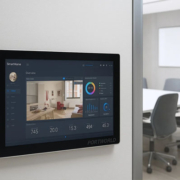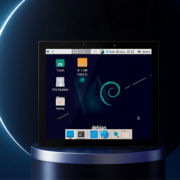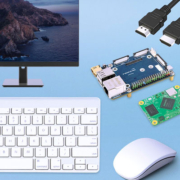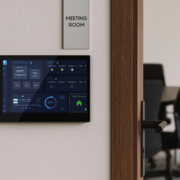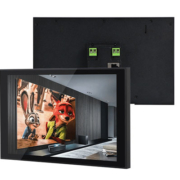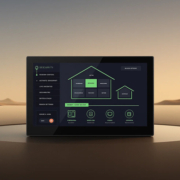Smart Home Control Panel Tablet
In today’s fast-paced world, the demand for smart home solutions has skyrocketed. One of the most integral components of a smart home is the control panel, which serves as the central hub for managing various devices and systems. The rise of smart home control panel tablets has further streamlined the process of home automation, making it more intuitive, accessible, and efficient.
What is a Smart Home Control Panel Tablet?
A smart home control panel tablet is a touchscreen device designed to act as the interface for controlling various smart home systems. These tablets come pre-installed with smart home control software that allows users to manage lighting, heating, air conditioning, security systems, entertainment devices, and more. With Wi-Fi or Bluetooth connectivity, these tablets can connect to the internet and communicate with various IoT (Internet of Things) devices within the home.
Key Features of a Smart Home Control Panel Tablet
- User-Friendly Interface
A well-designed smart home control panel tablet offers a user-friendly interface with easy-to-navigate controls. The touchscreen interface simplifies interactions, allowing users to adjust settings for various smart home devices with a single touch. - Integration with Multiple Devices
One of the biggest advantages of using a smart home control tablet is its ability to integrate with a wide range of devices. From lighting and heating systems to security cameras, these tablets connect seamlessly to all smart home devices, enabling centralized control. - Voice Control Integration
Many smart home control panel tablets now offer integration with voice assistants such as Amazon Alexa, Google Assistant, or Apple’s Siri. This means users can control devices simply by speaking commands, enhancing the convenience and accessibility of home automation. - Customizable Dashboard
With a customizable dashboard, users can arrange their most frequently used controls on the home screen for quick access. This feature ensures that important settings, such as lighting or temperature control, are always a tap away. - Remote Access and Control
Many smart home tablets allow users to control their home systems remotely through mobile apps. Whether you’re at work, on vacation, or simply in another room, you can monitor and control your home’s security, lighting, or temperature settings. - Energy Efficiency Monitoring
With growing concerns about energy consumption, many smart home tablets feature energy monitoring tools. These tools can help homeowners track their energy use and provide recommendations on how to reduce consumption, making their homes more eco-friendly.
Benefits of Using a Smart Home Control Panel Tablet
- Convenience
Having a central device to control all your smart home devices significantly improves convenience. Instead of juggling multiple apps or interfaces, users can adjust everything from one location, eliminating confusion and saving time. - Security
These tablets often have integrated security features like camera feeds, doorbell video monitoring, and alarm systems. By having real-time access to your security system, you can ensure the safety of your home, even when you’re not there. - Cost-Effective
Although the initial investment in a smart home control panel tablet might seem high, it pays off in the long run. Centralized control can help reduce energy costs by allowing users to optimize heating, cooling, and lighting schedules. Additionally, home automation systems can increase the resale value of a home, making them a worthwhile investment. - Seamless Integration
A well-built smart home control tablet integrates easily with a wide range of third-party devices. Whether you use lighting systems like Philips Hue, security systems like Ring, or HVAC systems like Nest, these tablets can sync up, providing a cohesive and seamless experience.
Use Cases for a Smart Home Control Panel Tablet
- Residential Settings
In a home, smart home control tablets allow users to control everything from lighting and temperature to entertainment and security systems. With voice control integration, homeowners can turn on lights, set the thermostat, or unlock doors without lifting a finger. - Commercial Spaces
In office buildings or hotels, these tablets can be used to manage lighting, HVAC, and even booking systems for meeting rooms. This ensures a comfortable and efficient environment for employees or guests, contributing to overall productivity and satisfaction. - Accessibility Features
For individuals with disabilities, a smart home control tablet can provide a convenient way to manage various home automation tasks. With touch interfaces, voice control, and large, customizable icons, these tablets offer easy accessibility to people with varying needs.
Choosing the Right Smart Home Control Panel Tablet
When selecting a smart home control panel tablet, it’s essential to consider factors such as:
- Compatibility: Ensure that the tablet supports the devices and systems you intend to use.
- Screen Size: Depending on your needs, you may want a larger or smaller screen for the interface.
- Operating System: Make sure the tablet runs a compatible OS (Android, iOS, or proprietary software).
- Customization Options: Check if the tablet allows for a personalized dashboard, voice control, and app integrations.
- Security Features: Opt for a device with strong encryption and secure remote access to protect your home.
Portworld’s Smart Home Control Panel Solutions
Portworld offers a range of smart home control panel tablets that are designed to meet the diverse needs of modern homes and commercial spaces. With customizable solutions for hardware, software, and branding, Portworld provides both OEM and ODM options, ensuring that businesses can tailor the tablets to their specific requirements. Featuring the latest processors, advanced display technology, and robust connectivity, Portworld’s tablets are engineered to enhance the functionality and aesthetic of smart home automation.

